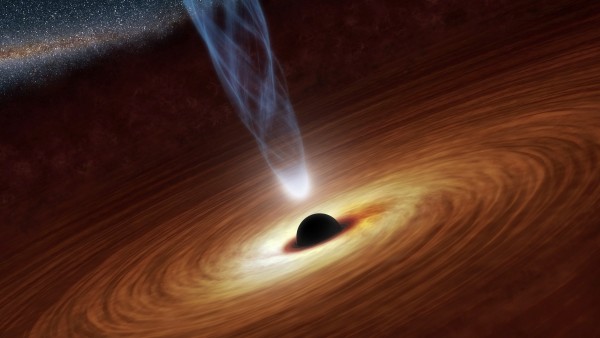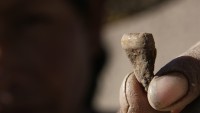NASA Images Show Dark Hole in Sun Big Enough to Fit 50 Earths
| Benjie Batanes | | Oct 17, 2015 10:46 AM EDT |
(Photo : REUTERS/NASA/JPL-Caltech/Handout) A supermassive black hole with millions to billions times the mass of our sun is seen in an undated NASA artist's concept illustration. Scientists have discovered a black hole in the Sun big enough to fit 50 planets the size of the earth.
Images of the Sun taken by NASA on Saturday, Oct. 10 reveals that its top layer features a hole big enough to fit 50 Earths. The hole is currently unleashing solar winds at incredible speed towards the Earth.
Scientists said that the solar winds will not pose any danger to people. However, satellite and radio communications will likely be interrupted if they are hit.
Like Us on Facebook
The Solar Dynamics Observatory was able to take the Sun's images using ultraviolet wavelength, which is invisible to the human eye.
Scientists usually use the terms dark spot or coronal hole to describe the phenomenon.
The event occurs on the lower polar region of the sun every 11 years at its lowest activity period. The dark spot is less hotter and its density is low compare to its surrounding area. It is at this stage that more solar winds can escape from the Sun's magnetic field.
In the mid 19th century, Richard Carrington, an astronomer from England, was able to watch a super solar storm unfolding. No subsequent solar storms has surpassed the one witnessed by Carrington either in intensity or magnitude. Astronomers credited the English astronomer by naming it as the Carrington Event or Flare.
The Carrington Flare allowed people in Spain and the Caribbeans to witness auroras for the first time. The Americans and Europeans, however, may have been inconvenienced by the solar storm as it was responsible for the loss of electricity and fires at numerous telegraph stations at that time.
Scientists have also devised a more accurate method of detecting solar winds or storms by observing the signs in the Earth's magnetic field known as SYM-H. The calculation will require the cooperation of several astronomy institutes and at least a minute worth of the image.
Astronomy observers said that the dark spot is still ongoing and will produce stronger solar winds. People in the United States will be able to witness auroras during the evenings.
Auroras are usually caused by solar winds and ejection of particles outside the sun. NASA physicists Leila Mays say that such occurrence appears to be part of the normal activity of the sun.
Tagssolar wind, solar storm, NASA sun image, sun dark spot, coronal hole, coronal mass ejections, dark hole, carrington flare, carrington event, sym-h method
©2015 Chinatopix All rights reserved. Do not reproduce without permission
EDITOR'S PICKS
-

Did the Trump administration just announce plans for a trade war with ‘hostile’ China and Russia?
-

US Senate passes Taiwan travel bill slammed by China
-

As Yan Sihong’s family grieves, here are other Chinese students who went missing abroad. Some have never been found
-

Beijing blasts Western critics who ‘smear China’ with the term sharp power
-

China Envoy Seeks to Defuse Tensions With U.S. as a Trade War Brews
-

Singapore's Deputy PM Provides Bitcoin Vote of Confidence Amid China's Blanket Bans
-

China warns investors over risks in overseas virtual currency trading
-

Chinese government most trustworthy: survey
-

Kashima Antlers On Course For Back-To-Back Titles
MOST POPULAR
LATEST NEWS
Zhou Yongkang: China's Former Security Chief Sentenced to Life in Prison

China's former Chief of the Ministry of Public Security, Zhou Yongkang, has been given a life sentence after he was found guilty of abusing his office, bribery and deliberately ... Full Article
TRENDING STORY

China Pork Prices Expected to Stabilize As The Supplies Recover

Elephone P9000 Smartphone is now on Sale on Amazon India

There's a Big Chance Cliffhangers Won't Still Be Resolved When Grey's Anatomy Season 13 Returns

Supreme Court Ruled on Samsung vs Apple Dispute for Patent Infringement

Microsoft Surface Pro 5 Rumors and Release Date: What is the Latest?













